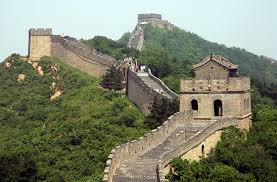
Source : FC :Arun Kumar Jain May 17 2010
There is an old Chinese saying that the mountains are high and the emperor
is far away.
We know that Chinese manufacturing has already made its way all over the world. Open any laptop, mobile phone, flat or plasma TV set, or video game. Irrespective of brand, it is most likely that the complex piece of technology has been made and assembled in China including the chips, battery, and casings.

Yet, somehow, the impression persists that Chinese goods are inferior and generally unreliable. Much of this emanates from publicity about Chinese sweat-shops and business practices. China has faced anti-dumping charges and duties in many countries. In 2006, it was taken to court at WTO by the US. Its companies have been marked for unsafe and dangerous exports of dairy and food products, lead-painted toys and toothpaste. No doubt, China is also one the world’s largest producers of copycat, counterfeit and pirated software, luxury goods, videos, and even medicines. Senates and parliaments have debated imposing penalties on China for currency manipulation, restrictive and unfair trade practices, and intellectual property rights.
But that is a small and superficial part of Chinese global industrial juggernaut. Most developed countries are running huge trade deficits with China. US alone had a trade deficit of above $300 billion in 2008. Most think that such trade surpluses are a result of low-cost platform that China provides. This is partly true, but not entirely.
As a rule, one must be respectful to any country that becomes No. 1 in any area. China is already the world’s leading exporting nation, having overtaken Germany in 2008-09. However, unlike Germany, the range of goods and industries in which Chinese firms have taken a lead position is astounding. Starting with commodity such as steel, the country also leads in production of electronics hardware, textiles, toys, shoes and leather products (including ladies handbags), telecom equipment, military hardware, solar panels for photo-voltaic conversion, electric bikes, batteries for electric cars, to name just a few. The country is slated to be amongst the top two producers of passenger aircrafts within a decade, and will give Boeing and Airbus a run for their money.
The point here is that it is time to review some of our embedded perceptions about China, and to understand how the country and its firms systematically scour global markets for business opportunities, technologies, and resource mobilisation. We already know of some Chinese firms such as SAIC (automobiles), CACC (commercial aircraft), Haier, Huawei, Lenovo, Goldwind and TTI that are aggressive in global markets.
Not many know of another quiet revolution happening around the globe, where Chinese companies are strategically buying majority shares in unlisted SMEs. These companies provide resources such as innovation capability, hi-technology and access to big consumers. Consider the following examples. Schiess Gmbh is a respected construction machinery maker in Germany having a history of more than 150 years in high-technology innovations. Though multinational in character, the company remained unlisted, privately owned entity. It specialises in machining components of very large size such as turbines or tunnel cutting. The company also boasts of micrometre precision even for lengths of 10 metres. Schiess was gradually taken over by Shenyang Machine Tool, the biggest tool manufacturer in China, specialising in small and medium-scale cutting machine tools. Schiess provides strategic depth to SMTCL in terms of product range and geographic coverage. The best part of this unpublicised acquisition is that the entire original German structure remains intact and Chinese ownership is hardly felt either by the customer or by its employees.

In a recent issue, the weekly Economist mentioned similar Chinese acquisitions of smaller Japanese companies. BYD, a Chinese car maker in which Warren Buffett has invested, acquired the Japanese dye maker factory of Ogihara for its unique capability for precision drill technology. The deal was never publicised. The weekly also mentions another acquisition of Laox by a Chinese appliances retailer Suning. The reasons for this acquisition are again strategic — learning to match famed Japanese quality and service standards at the supplier’s and distributor’s end, learning to innovate.
The writings are clear: disregard competition from China in innovation and high-technology areas at your own risk. Till not long ago, South Korea and Taiwan were considered sweatshops. Now they have some global leaders in their ranks (Samsung, LG, Acer). The Chinese have arrived and are coming in hordes.
No comments:
Post a Comment